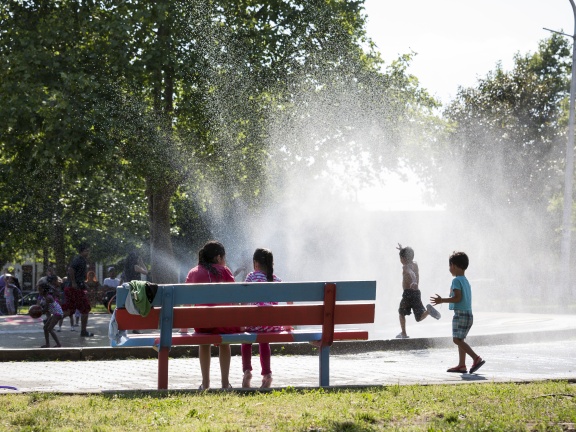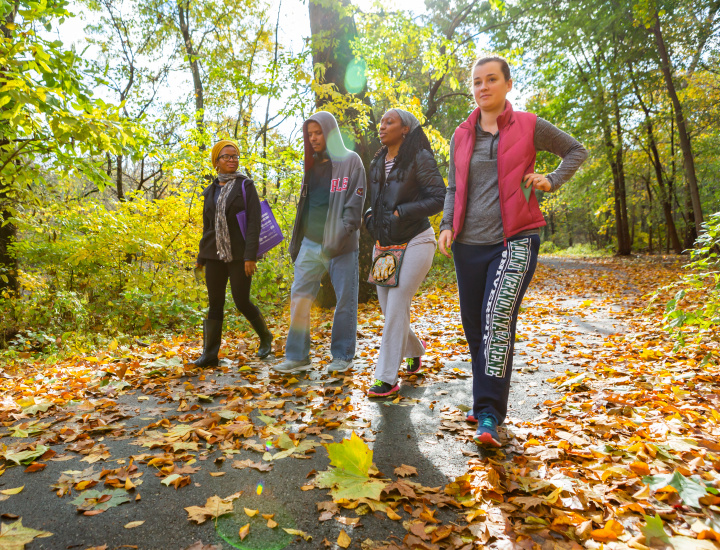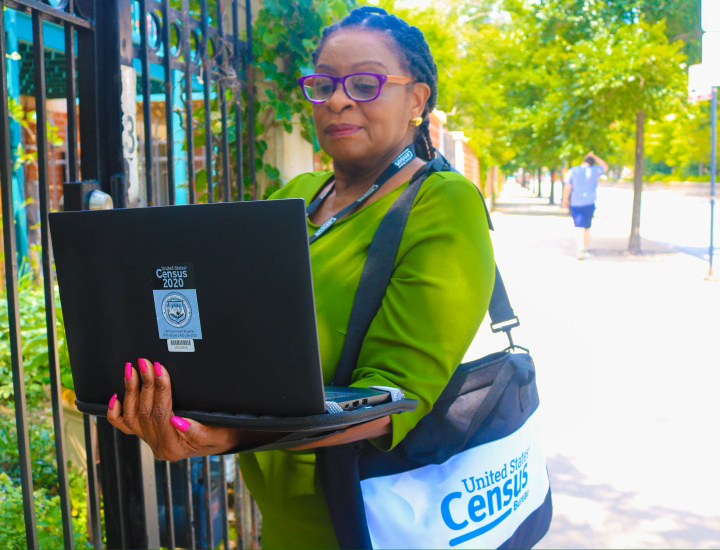A Conversation about the Benefits and Costs of Urban Public Spaces

As one of the country’s largest funders of urban public space, we are eager to understand the extent to which existing research and evidence supports or refutes the assumptions guiding the Foundation’s public space grantmaking, and to build knowledge for the field of public space developers, managers, and investors.
With that in mind, through the leadership of our Director of Evaluation and Learning, Hilary Rhodes in partnership with staff on our Creative Communities team, the William Penn Foundation commissioned a multi-member team of researchers from Temple University, Drexel University, Georgetown University, and the U.S. Department of Agriculture Forest Service to conduct an exhaustive synthesis of existing research on the economic, environmental, health, social benefits and costs of urban public spaces.
Drawing on their wide range of expertise, including economics, geography, sociology, public health, and the environment, the researchers systematically identified and reviewed more than 450 articles going back 30 years. By reviewing articles, they identified what evidence exists, determined how strong it is, and clarified the key issues research has not addressed.
This was a real team effort and the full report, The Benefits and Costs of Urban Public Spaces, as well as an executive summary can be found here. I asked Judilee Reed and Cara Ferrentino from our Creative Communities team to reflect on some of the report’s most interesting learnings and discuss how the findings will influence our public space grantmaking moving forward.
--------
McCaney: Why was it important to conduct this research now? What were you hoping to learn?
Reed: We are excited about this research because to our knowledge a synthesis of existing public space research has never been done at this scale before. We believed it would help us deepen our understanding of the impacts of public space investments, and test some of our current assumptions about the benefits of urban public spaces. We hoped it would help us better understand what benefits we know, based on evidence, public spaces are bringing to communities, and what unintended consequences they sometimes present.
McCaney: What are some of the benefits of urban public space that were widely confirmed by the existing evidence?
Reed: The study confirmed quite a few benefits of urban public spaces including the facilitation of opportunities for social interaction and connection, improved physical and mental health, environmental benefits, and in some cases economic value creation. That said, it revealed substantial inequities associated with the distribution of these benefits, indicating that low-income communities and communities of color have less access to high-quality public spaces than whiter and wealthier neighborhoods.
McCaney: What are some of the most important findings of the research?
Reed: One of the most important findings in this report is that public space can exacerbate inequities when it’s not planned well or supported by its surrounding community. This highlights the importance for philanthropy and other stakeholders to 1) support community engagement that recognizes potential barriers to meaningful participation, 2) invest in maintenance and stewardship activities in low-income neighborhoods, and 3) consider programming that can build social connections over time – recognizing that in most cases the existence of a space alone won’t accomplish this goal.
McCaney: While the aim of this effort was to create knowledge that can be shared with practitioners and other investors, the evidence cautions against making too many generalizations about the impacts of urban public spaces. What are the key challenges in creating universal truths about urban public spaces and their impacts?
Reed: Public space work is by definition place-based and specific to local contexts so there are not universal rules that apply to all public spaces. We must anticipate variability based upon a neighborhood’s environment, history, culture, economics, and local leadership, as well as each public space’s specific purpose.
McCaney: In these divided and highly polarized times, there is a lot of talk about how public spaces can bring people together. While we think of our own public space grants as investments in community building, the current evidence suggests that we need to be very cautious and circumspect about our expectations for “social outcomes,” particularly with regard to bridging social divides among different groups. What does the evidence suggest we can expect in terms of realistic social and community outcomes and benefits from investments in urban public space?
Ferrentino: We were eager for the authors’ findings related to social cohesion, specifically the idea that public spaces bring people together and create a sense of community – something we strive for in the projects that we support. The authors found that while public spaces do generally help users foster a sense of community -- especially those programmed for group activities, such as recreation centers -- social connections tend to form within already existing groups, such as those defined by race, class, immigration status, and life stage.
Furthermore, the authors found there is limited evidence that public spaces create “actual opportunities for diverse groups of people to interact and forge ‘bridging’ social capital.” While social groups generally attempt to peacefully coexist in these spaces, the current research shows that their interactions “can remain superficial . . . or even become hostile.”
In addition, the findings showed there is limited ability for public spaces alone to meaningfully reduce or eliminate deeply rooted societal divides and prejudices. The interactions that these spaces foster “in some cases … result in superficial civility, which could still be beneficial in cities undergoing demographic transitions, but in other cases it creates tension among users sharing the space.” This means we need to think carefully about how public space governance, management and programming can help minimize these negative impacts.
McCaney: As a public space funder with an interest in promoting access to well-designed and well-maintained public spaces for all Philadelphians, the research suggested important findings relating to the lack of equitable access to public spaces in many communities. What are some of the other important public space equity issues that the research suggests requires more attention and focus?
Ferrentino: The report paints a stark picture of widespread inequity in urban public spaces; study after study found that the benefits of public spaces are available disproportionately to wealthier, whiter neighborhoods, while the harms of poorly maintained public spaces accrue to communities of color and to low-income neighborhoods. In addition, low-income neighborhoods typically have fewer resources – specifically time and money- at their disposal for fundraising or volunteering in local “friends of” groups to support maintenance of a local public space. This type of volunteerism is important to public space maintenance in many cities, including Philadelphia.
While we’d long considered poorly maintained public spaces to be unacceptable and a powerful negative signal to send to communities, we didn’t realize the depth of evidence around the harms caused to their neighbors. This was sobering and a reminder that inequity manifests itself not only in a lack of proximity or accessibility to high quality public space, but also in overexposure to poorly maintained spaces.
McCaney: The research touches on the topic of “green gentrification,” meaning the risk of community displacement as a result of investments in “signature” public spaces. The research team suggests that there is a need for more research on this topic, including determining whether there is a certain threshold of investment, or type of investment, that minimizes the likelihood of displacement and marginalization. What does the existing research suggest as possible ways to mitigate community displacement risks associated with public space investments?
Ferrentino: The report found evidence that public space projects which are designed to spur economic development are often associated with resident displacement. This is in many ways unsurprising; a public space project intended to provide a market signal probably will. On one hand, this evidence invites us to examine each new public space’s origins- and funding - to see how these might influence a chain of decisions around who is directly involved and who the park is designed for and marketed to. Relevant here is that the report found evidence that many public space projects are designed for the needs of certain users – namely whites, males, the middle class, and adults – over others. But we also think the evidence points to the need for neighborhoods to think bigger picture about how to avoid displacement tied to public space through levers beyond – and before - the public space planning process itself, specifically those related to housing and cultural preservation.
McCaney: One of the things that I also thought was intriguing about the findings is how much we don’t know, including how incomplete our understanding is of the mechanics behind the benefits that we can demonstrate. What do you think are the important unanswered questions that should be tackled next?
Reed: I would like to know more about the potential positive effects of resident- and community-centered, well-programmed, and well-maintained public space. How can we best engage the community to design and maintain spaces that generate a wide range of benefits – economic, social and more -- for everyone? And, how can we sustain this impact over the long run? Overtime, I hope we see public spaces in Philadelphia that produce multiple benefits, and which make a lasting impact on the city.
McCaney: How do you think the learnings from this study will influence our great public space grantmaking going forward?
Reed: The findings of this study are crucial to consider in our public space funding. And it’s worth noting that no two public spaces are the same. The context of each project, and each neighborhood, matters and there is quite a bit of variability in how public spaces will impact individuals, communities, and neighborhoods. To capture the inherent benefits of public spaces, and to do our very best due diligence to mitigate some of the potential negative effects caused by new spaces, we believe it’s paramount to support work that deeply engages - or preferably, is led by - community members local to each place. This is central to our work, and we will continue to make this a priority.
We are proud of Philadelphia’s nationally recognized public spaces and the inclusive practices that have led to thriving public spaces that make all people feel welcome, although of course, there is more work to do. In this sense, we believe that practice here is arguably ahead of the research, although there is always something new to learn.
To learn more about the findings from the synthesis, download the full report.

